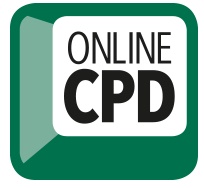Feature pest control | PPC90 March 2018

The new Code of Best Practice for The Use of Break Back Traps/Snap Traps has been released. If you’re working in a BPCA Servicing company you should already be following the Code as it’s part of our membership criteria.
The document is freely available to everyone, including the general public – so don’t get caught out by not having read the new Code. Even if you’re not a member - it’s well worth reading your industry’s latest best practice documents.
Even something that appears simple can be a problem in the wrong hands. So, I am very pleased that we have agreed a Code of Practice that will protect pets, wildlife and people by the safe and professional use of these devices.
Howard Taffs, BPCA Servicing Committee Chair
The Code in full:
The conditions in which break traps might be used would be during a riddance programme to bring a resident population of rodents under control and for nontoxic control of intruder rodents to prevent resident populations from arising.
Riddance
Purposes:
- Quick knockdown of the rodent population, break back/snap traps used in conjunction with other methods eg toxic bait
- For nontoxic control of resident rodents where the use of toxic bait is restricted, but a lethal means of removing the rodent is required.
Recommended internal use:
Both open and covered traps may be appropriate for rapid control of internal rodent infestations. Open traps may be appropriate in areas where the rodent is either attracted onto the activating plate with the use of a suitable bait or funnelled directly over the activating plate.
Open traps should be assessed so that the risks to non-target animals, people or a foul trap of the rodent are minimised, this might be by locating the trap directly in front of a hole or using local materials (eg boards) to direct the rodent directly over the activating plate.
Traps with small activating plates designed simply to hold bait should be well baited. Unbaited traps should not be used in open areas where rodents might stumble over them and be foul trapped. Unbaited traps should only be at the end of a funnel or means of directing the rodent directly over the activating plate.
Recommended external use:
Open traps should never be used outside because of the risk to non-target animals. Traps should always be in a suitable box or tunnel, the design of which should be to funnel the rodent over the activating plate and located so as to minimise the risk to non-target animals.
Unless there are very specific problems, trapping boxes would be inappropriate along perimeter fence lines on a permanent basis. Traps should only be deployed externally after a careful and considered documented risk assessment.
This should be carried out in areas where the risk posed by rodents to public health is sufficient to merit the use of a permanently sited trapping box.
Traps can be pre-conditioned by leaving them un-set, but baited (ie holding a nontoxic block); following detection of rat activity, traps can be set. This is helpful to overcome neophobia in rats and where activity (ie immigration from surrounding land) is sporadic.
Intruder control/monitoring:
Purpose: there may be circumstances where the use of toxic bait for monitoring rodent activity internally is unsafe or inappropriate. The use of trapping boxes is a valid and effective means of nontoxic control of intruder rodents and is a valuable tool in the prevention of internal infestation and protection of public health.
Open traps are not appropriate for permanent intruder control or rodent monitoring as the risk of foul trapping is considerable unless very special circumstances prevail. In this case, a written risk assessment should be in place prior to deployment of open traps.
All permanently sited traps should be located in an appropriate tunnel or box so as to direct the rodent over the activating plate.
Traps should be located on a plan or checklist and a record kept of their inspection. They should be tested regularly to ensure they are properly functional and replaced when corroded or obstructed by environmental dirt.
Trapping boxes should be located in areas where they are less likely to be knocked and set off or heavily soiled.
The frequency of trap checking should be in line with the site visit frequency risk assessment.
October 2017 - Version 1
What is a Code of Best Practice?
BPCA Codes of Best Practice (COBP) are written rules which explain how people working in the pest management industry should behave in a particular situation.
The Code of Best Practice is freely available to everyone through the BPCA website, meaning it’s available in full to non-members and the general public.
GET CODING!
If you know of an issue or situation that you feel needs a Code or guidance document producing, please contact us, and the Servicing Committee will then discuss it.
hello@bpca.org.uk
Take the CPD quiz now (Login required)

Source: PPC90